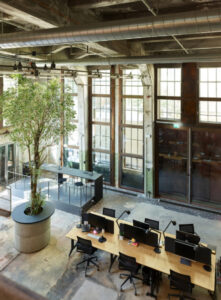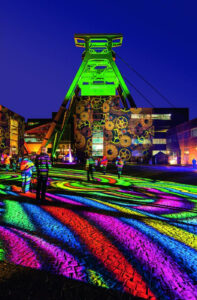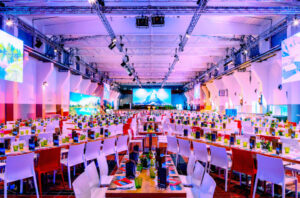Reclaiming the Industrial Past
While traveling around Europe, I have learned about how much work is done to reclaim industrial areas. Lots of modern-day public spaces and livable areas used to be harsh industrial zones.
In cities like Essen, Berlin, and even Bonn, rail yards and old factories are now being turned into pleasant neighborhoods and creative spaces.
Blending Old and New
In Berlin, especially in areas like Friedrichshain, it is still easy to spot some traces of the past.
For example, abandoned tracks lie next to bike lanes, and brick warehouses now hold offices, galleries or cafés. The industrial character of these areas hasn’t been entirely destroyed or hidden; it’s just repurposed.

Not only does this help to make efficient use of space and resources, but it also makes the city feel layered and not artificially new. Walking through these areas, you can still recognize the city’s working-class history, even as the area moves forward and modernizes.
Bonn’s Approach
Bonn shows a more subtle version of industrial reuse. Along parts of the Rhine, former shipping and industrial zones have been turned into parks, walking paths, and residential spaces.
Although it’s less dramatic than Berlin, Bonn’s transformations help to highlight how smaller cities can still make old spaces useful again without losing their character.
The riverfront developments also have a focus on public access, opening up areas that were once closed off for purely industrial work.
From Coal to Culture
While traveling in Essen, I visited the Zollverein Coal Mine Industrial Complex. This was once one of Europe’s most important coal plants. Now, the sprawling complex has been turned into a UNESCO World Heritage Site that features everything from museums to public spaces, and cultural centers.
The site is massive, and much of the original structure still stands, including giant steel frameworks, machinery halls, and smokestacks. Instead of demolishing it, engineers and planners adapted the site for modern use while preserving its industrial identity.

One of the most creative examples of repurposed space I saw was a large former coal-processing hall. After someone noticed its impressive acoustics, it was transformed into the Grand Hall Zollverein. Now, the space hosts concerts, conferences, exhibitions, and other major events.

Different Mindset
In the U.S., old industrial spaces are often left abandoned or torn down. There is less pressure to reuse land, especially in cities that have plenty of room to sprawl. But in Europe, where the space is tighter, reclaiming these sites is often a smarter option.
Reclaiming industrial spaces like Zollverein, or the old yards in Berlin and Bonn, shows that civil engineering isn’t just about building new things; it’s about finding ways to reuse what already exists. When done correctly, it creates places that are practical, sustainable, and full of character.
Written by Brendan G
References
Schadach, M. (2021, January 11). RAW-Gelände – Urban art and lost place romantics. Fernweh-Motive. https://fernwehmotive.de/en/raw-gelaende/
UNESCO World Heritage Centre. (n.d.). Zollverein Coal Mine Industrial Complex in Essen. https://whc.unesco.org/en/list/975/
Fakharany, N. (2024, July 20). From factories to workspaces: The evolution of industrial buildings into modern offices. ArchDaily. https://www.archdaily.com/1018859/from-factories-to-workspaces-the-evolution-of-industrial-buildings-into-modern-offices
